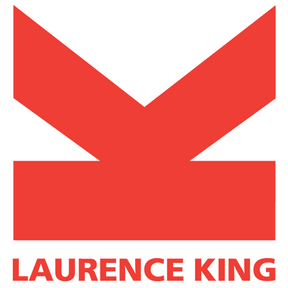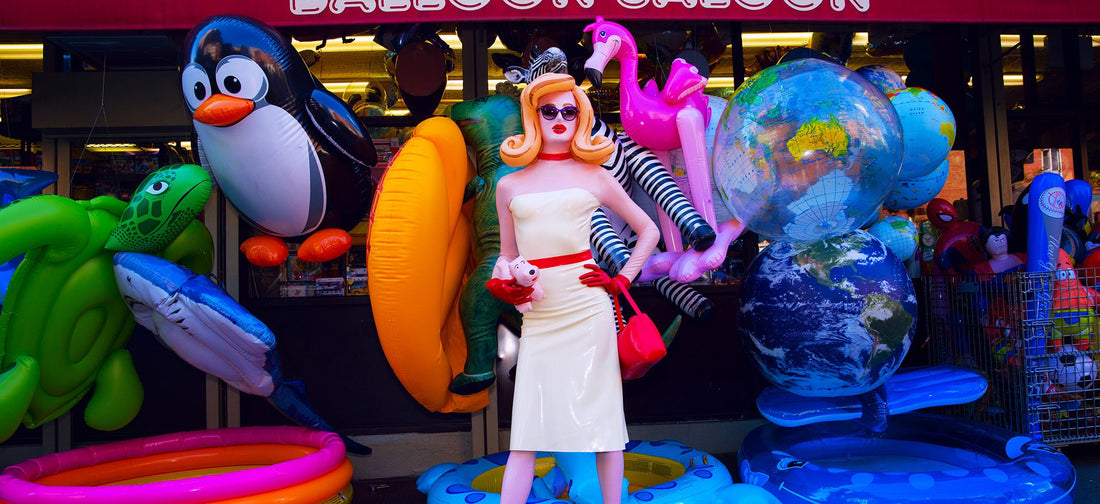Laurence King's growing art list showcases some of the most exciting practitioners from the worlds of art and photography. We spoke to Commissioning Editor John Parton to find out what's in store…
Can you tell us a bit about the LKP art list and how it has developed?
JP: The Laurence King art list is expanding a huge amount, is going in many interesting directions, and we’re doing completely new types of book for the company. LKP has a long history of publishing books that are more focused on art-history students but the list is now much bigger, much more imaginative, and encompasses a much wider audience, from everyday museum-goers, to fanatical contemporary art followers. We’re also going beyond what has traditionally been defined as an art list and have a really strong film list, as well as doing books that look at art with humour and that aren’t afraid to not take themselves too seriously.
What can we expect to see from the list this coming season? Which are your standout titles?
JP: Standout art titles for me this year include Ways of Being: Advice for Artists, by Artists, which is an amazing collection of conversations with contemporary artists (and some not-so contemporary archival quotes) split into bitesize chunks and encompassing every subject, from Sarah Lucas on inequality to Billy Childish on being drunk, to Maggi Hambling on how to just not give a f**k! We’re also publishing an amazing new and definitive book on the career of Steve McCurry, a beautiful guide to looking at art by Alex Katz, and – who could forget (!) – The Movie Kama Sutra, by Little White Lies.
Girl on Girl and Madam & Eve both feature art from a female perspective, is this is a short-term trend to tick boxes, or part of a more significant shift in art publishing (and the art world as a whole)?
JP: There’s no doubt for me that this shift has already happened, and continues to do so. I think some of the groundwork for this has been happening for a long time. For example, a huge part of the teaching of Art History, in my experience at least, centers on ideas of the male gaze, the history of feminist art, an awareness of the many imbalances of the art-history canon and many of the various problematics of how different artists have historically been valued and exhibited (including within art books!), and it’s incredibly refreshing that art publishing, and the wider art world, is responding to that. There is obviously a lot more work to be done though.
Would you say that art publishing is generally quite conservative? Is it an accurate reflection of what’s going on in the art world in general?
JP: You always have to be inventive with ideas for books and the way you publish them in order to survive and this is one of the things that is great about book publishing in general, it forces you to always look for fresh ideas. There are books on certain artists, though, or aspects of the art world, which I would love to do but which tend to be cast as too ‘niche’ or specialist and so don’t happen, which is a shame, but probably a necessary reality. Having said that, it’s amazing how things can change so quickly. We’re proudly publishing Alright Darling? this year, a book of incredible images of drag queens. This probably would have seemed quite daring just a couple of years ago, but drag has suddenly started heading into the popular consciousness in a big way.
If so, how could publishers take more risks?
JP: I don’t know if it’s about taking risks (publishing seems like a risky enough business as it is!), but is more about keeping your ear to the ground for new and changing trends and making sure you’re doing the books that feel like a direct part of what is going on out there.
What’s the most unusual art book proposal that you’ve received?
JP: Not strictly an art book, but in a previous job I did a book solely about minute detail in the design of office chairs, which I remain proud of!
Which art book do you wish you’d commissioned?
JP: Good question! Something that has really stood the test time and manages to combine really high-quality writing with massive popularity in the bookshops. Gombrich’s The Story of Art is an obvious example, which was commissioned way before I was even born but is still a best-seller. It’s interesting to look at it in relation to the question of women artists (among others) being written out of the canon though, so no book is perfect!
What are your favourite spaces to view art?
JP: London is obviously an absolutely amazing place to look at art because there’s always so much on, there’s so much variety and lots of it is very high quality. Having said that, it can also be completely exhausting and a bit pointless to try and keep up with it all! So I actually like nothing better than going on a specific trip out of town, or travelling to somewhere that feels completely different, to see a particular exhibition or collection. The Yorkshire Sculpture Park, for example, is (literally…) a breath of fresh air, I was also lucky enough to have three days in Venice last year with nothing to do but visit the various Biennale exhibitions, which felt very special.
What’s your guilty art pleasure?
JP: Um, I sometimes find myself looking at art auction listings and building collections with my non-existent imaginary wealth which, now that I’ve said it, sounds pretty weird and pointless!

